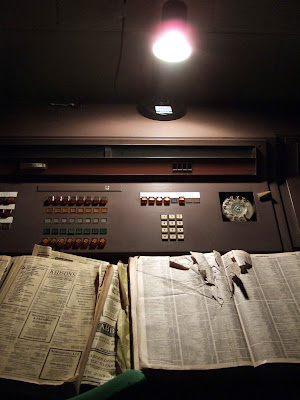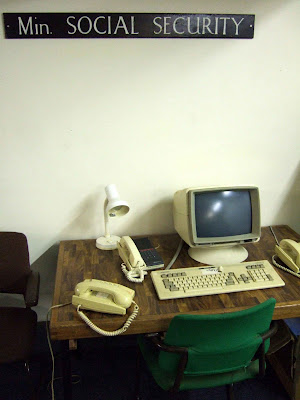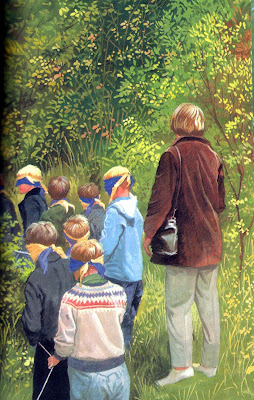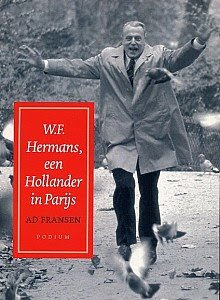Wednesday, February 25, 2009
Tuesday, February 24, 2009
Independent ideas

What do the words independent bookseller mean to you? It's a difficult question, because there is no right answer. Some independent bookshops are run with flair and imagination by passionate bibliophiles; others exude an air of decay and misanthropy that will make you rush to the nearest chain. An independent bookshop is as good as its owner.
I really can't see the point of having an Independent Booksellers Week. If independent booksellers are any good, then surely we should be supporting them all year round. If they're not, then good riddance. It's pointless to try and create a 'brand' for a disparate group of people.
Worst of all is the logo.
According to a spokesman from the Booksellers Association:
“Our aim in commissioning a new logo was to create something unusual and eye-catching, a memorable design that would stand out amongst the many brands on the high street, just as independent booksellers do. We are very grateful to Damian Horner for giving us his time and expertise in coming up with this logo. It is fresh and funky yet timeless, and it will stand as the logo of Independent Booksellers Week for the foreseeable future.”
Oh dear. The F word. If you can explain how the image above is 'funky' then I'd be very grateful. All I can see is a rather embarrassing, low budget logo that was created in Photoshop. It's trying to be fun, but just reminds me of my Sunday school teacher's attempts to get 'down wiv da kids'.
Damian Horner, the former head of Mustoes advertising agency says:
Perhaps I'm missing something, but what charms? We have a crude image of an open book superimposed onto a pair of running legs.
If I am wrong, please tell me. I will defer to the wisdom of my peers, particularly those who do it for a living, like Grey Area.
Monday, February 23, 2009
'This book contains nothing but the truth'
 'I am writing this book without bothering about any literary rules (or any political systems, frontiers, censors or national prejudices). I am writing it as though I were giving evidence under oath in the very highest court and I am ready to answer for every single word. This book records only the truth. AS IT REALLY HAPPENED.'
'I am writing this book without bothering about any literary rules (or any political systems, frontiers, censors or national prejudices). I am writing it as though I were giving evidence under oath in the very highest court and I am ready to answer for every single word. This book records only the truth. AS IT REALLY HAPPENED.'It would be inconceivable for a book as important as Primo Levi's If This Is a Man to be allowed to go out of print. Aside from its literary merits, the subject matter has secured its status as a 20th century classic. However, Anatoli Kuznetsov's Babi Yar hasn't enjoyed the same fate.
Babi Yar was the scene of one of the most appalling acts of mass murder of the Second World War. 200,000 people - mainly Jews - were killed by the Germans and thrown into an open grave. Most of the victims were shot, but there are also accounts of women being gang-raped and beaten before being buried alive.
Anatoli Kuznetsov was a 12-year-old boy when the Germans invaded his home city of Kiev and for the next few years he kept a secret diary, recording both personal and anecdotal accounts of family, friends and neighbours. This diary became the basis for Kuznetsov's 'documentary novel' Babi Yar.
In some ways Babi Yar is a misnomer for Kuznetsov's book, because the massacres mercifully only occupy a few chapters. I say mercifully because, with the best will in the world, I don't think I could face reading 460 odd pages of people being shot, beaten, raped and gassed.
So what is Babi Yar? The narrative itself is primarily a young boy's memoir of survival and it is written with great wit and a typically Russian sense of the absurd (yes, I know Kiev's in the Ukraine, but Kuznetsov is half-Russian). It is the author's humour that makes the rest of the novel bearable.
But first and foremost, Babi Yar is an impassioned polemic against man's inhumanity to man and Kuznetsov is as scathing about Stalin's regime as he is about the Nazis:
'Soviet humanism, German humanism, Assyrian humanism, Martian humanism - there were so many of them in the world and the primary aim of each one was to kill off as many people as possible; they all began and ended in Babi Yars.'
'What is this banditry going on all over the world? First one gang appeared, with their red banners and fine slogans, murdering, robbing and destroying. Now another has arrived, also with red banners and fine slogans, also murdering, robbing and destroying. You are all bandits. Some people build and work and labour in the sweat of their brows, then the looters come along, who have never created anything since the day they were born but know how to shoot. And they grab everything for themselves. It is you, and only you, the ones who do the shooting, who are the real, genuine enemies. HENCEFORWARD AND TO THE END OF MY DAYS I SHALL HATE YOU AND YOUR MISERABLE WEAPONS, MAYBE I SHALL DIE IN ONE OF YOUR PRISONS OR FROM ONE OF YOUR BULLETS, BUT I SHALL DIE FULL OF CONTEMPT FOR YOU AS THE MOST LOATHSOME THING ON THIS EARTH.'
Unsurprisingly, Babi Yar didn't go down terribly well with the Soviet censors. The only surprise is that an edited version was allowed to be published. Kuznetsov copied the original manuscript on 35mm film and after convincing the KGB that he was trustworthy, was permitted to travel to London in 1969 to do some research. Kuznetsov decided to smuggle the manuscript film out in the lining of his jacket.
In London, Kuznetsov eluded his KGB minder and defected to Great Britain. Three years later a new version of Babi Yar appeared, containing the original manuscript and passages that Kuznetsov didn't dare write in the Soviet Union. In the Penguin translation, the censored material appears in bold type whilst the additions are in parentheses.
Kuznetsov died of a heart attack in 1979 at the age of 49. Some people suspected foul play, but there was no conclusive evidence.
Why is Babi Yar out of print? It is a well-written, powerful account of life under Nazi and Soviet totalitarianism and, literary merits aside, is a vital historical document. It could be argued that the attrocities at Babi Yar were eclipsed by the horrors of the camps, but that doesn't justify the fate of this great novel.
I hope that an enlightened publisher decides to reprint this compelling and important book.
Monday, February 16, 2009
Going Underground - Part Two
We had travelled from Vienna and were struck by the contrast between the two cities. Vienna was smart, lively and cosmopolitan. Prague was frozen in time, decaying, depressed and eerily quiet for a capital city.
Two scenes in particularly stay in the mind. In the first, my girlfriend and I were unsuccessfully trying to negotiate our way through a system of tunnels under a main road. A middle-aged man saw us struggling and subtly signalled to us that we should follow him. He marched ahead, afraid to be seen talking to Westerners, and with small hand gestures pointed the way. When we reached the end of the tunnel, he gave a brief, shy smile and quickly waved goodbye. In the second scene, I remember how people were eating ice creams as they walked home from work. Every ice cream was the same flavour - only one was available - and they were all a pathetically small size. How much effort would it have taken to at least have a choice between strawberry and vanilla?
All this is a roundabout way of saying that my experience gave me a rather negative impression of the old Soviet bloc countries. But in spite of that, I would still rather take my chances in Stalin's Russia than live through any form of nuclear conflict.
The received wisdom is that the nearest we came to nuclear war was the Cuban Missile Crisis. However, it is now becoming clear that there were other, potentially more serious flashpoints during the 1980s. If an attack had been launched against Britain, then Kelvedon Hatch would have been one of the main control centres for the UK.
Built in the 1950s and decommissioned in 1992, this bunker was built to accommodate up to 600 people for three months without the need to replenish supplies. Most of the equipment is from the 1980s, including some old Apple computers with huge diskettes.
Here are some photos I took last week:

The entrance to the bunker is the front door of a modern farmhouse. Once you're inside, this tunnel takes you into the centre of a hill. Walking alone down this long tunnel, passing rows of geiger counters, is a rather unsettling experience. But what follows is even stranger.
 The bunker complex begins with the communications section: a series of rooms filled with radios, telex equipment and phones. There is even a BBC studio, to broadcast reassuring messages to the nation, or what's left of it.
The bunker complex begins with the communications section: a series of rooms filled with radios, telex equipment and phones. There is even a BBC studio, to broadcast reassuring messages to the nation, or what's left of it.To the left of this machine is a door leading to a vast, private telephone exchange. I have no idea why there is a copy of the Yellow Pages. I can't imagine that anyone would be dialling out for a pizza.
 A cheery little map that allows bunker personnel to measure radiation yield, wind speeds and fallout levels. Many of the bunker staff would have lived locally, so they'd be able to work out whether Auntie Doris had been nuked or not.
A cheery little map that allows bunker personnel to measure radiation yield, wind speeds and fallout levels. Many of the bunker staff would have lived locally, so they'd be able to work out whether Auntie Doris had been nuked or not. This photo was only taken a few days ago, but it looks more like 20 years.
This photo was only taken a few days ago, but it looks more like 20 years. Even the end of civilisation needs a good logo and this one is quite appealing. I'd love to know what brief they gave the artist who designed it. It looks a little bit like the W.A.S.P. symbol in Stingray.
Even the end of civilisation needs a good logo and this one is quite appealing. I'd love to know what brief they gave the artist who designed it. It looks a little bit like the W.A.S.P. symbol in Stingray. This is the Prime Minister's room, complete with faded Hay Wain. It is unlikely that any senior officials would have had time to travel from London to the bunker.
This is the Prime Minister's room, complete with faded Hay Wain. It is unlikely that any senior officials would have had time to travel from London to the bunker. 'Hello, is that Social Security? My workplace has just been vaporised. Can I claim Jobseeker's Allowance?'
'Hello, is that Social Security? My workplace has just been vaporised. Can I claim Jobseeker's Allowance?' It's hard to convey the sheer scale of the bunker. This picture only shows a part of the main operations room, which contains desks for every Government ministry.
It's hard to convey the sheer scale of the bunker. This picture only shows a part of the main operations room, which contains desks for every Government ministry. I love the combination of grim, top secret documents and the image of British Telecom's inane Busby logo.
I love the combination of grim, top secret documents and the image of British Telecom's inane Busby logo. If you're feeling a slightly under the weather, the bunker has medical facilities. I would prefer a little more privacy when going to the loo, particularly as this is a corridor.
If you're feeling a slightly under the weather, the bunker has medical facilities. I would prefer a little more privacy when going to the loo, particularly as this is a corridor. Ominously, there are plenty of hospital beds in the bunker and even a makeshift operating theatre.
Ominously, there are plenty of hospital beds in the bunker and even a makeshift operating theatre. And only a few feet away from the operating table, there is a selection of coffins and body bags, just to cheer you up.
And only a few feet away from the operating table, there is a selection of coffins and body bags, just to cheer you up.I cannot begin to imagine working in this environment, even during peacetime. Given that a single nuclear warhead is 250 times more powerful than the Hiroshima bomb, this bunker is effectively a tomb, offering its inhabitants nothing more than a delayed death.
On a cheerier note, you can hire the bunker for weddings and children's parties. I'd love to know what sort of freak would hold their child's sixth birthday party in a nuclear bunker.
I wonder how much they charge?
Friday, February 13, 2009
Going Underground - Part One
Yesterday I made a return visit and although I wasn't expecting to find the car park full of day trippers, I was surprised to find that I was the bunker's only visitor. It made the whole experience even spookier.
For two hours I was in one of the safest places in Britain and if anyone had decided to launch an impromptu nuclear strike, I would have been completely unscathed. Physically, at least. Mentally, I'm not sure how well I'd have coped with living on a diet of Huntley and Palmers biscuits with only a malodorous Essex farmer to keep me company.
While I was in the bunker I took lots of photos, but they don't really capture the unsettling atmosphere of the place, so I've also made this short film with some added BBC Radiophonic musique concrete from the late 1960s. The music goes a bit mad at the end, but then so did I:
Wednesday, February 11, 2009
The darker side of the Cub Scout movement
I politely declined and never heard from him again.
The following year my best friend joined and, although I still had no urge to be a Cub, I was rather jealous of his badges. We spent rainy afternoons in his attic bedroom, poring over the Cub Scout handbook and I secretly yearned to have a Scientist badge. I owned a chemistry set and had performed several life-threatening experiments. Surely I would qualify?
In the end I resisted temptation. The Cub Scout movement seemed far too goody-goody to be any fun.
However, I was unaware of these badges, as featured in the Ladybird Book of Cub Scouts:
1. The Obscene Telephone Call badge:

Normal heavy breathing achieves the standard bronze award. Extra marks are given for reversing the charges and asking questions about the colour of underwear.
2. The Narcotics Cultivation badge:

This highly prestigious badge takes the Cub Scout through the whole process, from successfully cultivating a plant in secret, to refining it in the laboratory and selling the finished product to members of the public.
3. The Urban Degeneration Badge:

To qualify for this award, candidates are required to distribute litter around residential areas without being detected. Later, they will offer to remove the rubbish as part of a lucrative bob-a-job exercise.
4. The Pornography badge:

This badge is awarded to Scouts who can find disgarded pornographic material in parks and woodlands. Since the advent of the internet, this once common skill is increasingly rare.
5. The Abduction badge:

This badge requires the abduction of at least five children and one adult for a minimum of two hours.
6. The Church Desecration badge:

Armed with nothing more than the Ladybird book What To Look For Inside a Church, these young cubs can steal valuable medieval artefacts without arousing suspicion. Their theft of a Tudor silver chalice raised enough money to pay for plane tickets to the 97th International Scout Jamboree in Oregon.
I apologise to Ladybird books and the artist John Berry, but I can't look at their idyllic illustrations without thinking of a darker alternative, particularly when they depict a fine, upstanding organisation like the Boy Scout movement.
As for the Girl Guides...
Sunday, February 08, 2009
Friday, February 06, 2009
Hermans' Hermit

I wonder how many novels were published in English between 1966 and 2006? Hundreds of thousands, I expect. Perhaps even millions. The only thing I can say with any certainty is that nearly all of them will now be out of print, sometimes deservedly so.
With so many new novels appearing every year, it is scandalous that it has taken 40 years for someone to publish the Dutch writer W F Hermans' masterpiece Beyond Sleep. Still, better late than never; particularly when the translation is as good as Ina Rilke's.

Beyond Sleep is narrated by Alfred Issendorf, a geologist in his mid-20s who has travelled to Norway to join an expedition to the far north of the country. Alfred hopes that in the barren, rocky wastelands of Finnmark, he will find evidence that will vindicate his mentor's bizarre theories about the origins of certain holes, but from early on he is frustrated by events.
To make things worse, Alfred discovers that his Norwegian companions are much fitter than he is and manage to hike across the rough terrain with great ease, leaving him straggling behind, frequently losing his balance as they effortlessly cross rivers and marshes.
Alfred looks forward to settling down to a good night's rest, but in the land of the midnight sun there is no respite from the day. No matter how tired he feels, the constant daylight and loud snoring of his friend Arne take their toll on Alfred's state of mind. Beyond sleep, Alfred becomes increasingly paranoid about his companions.

Exhausted, covered in mosquito bites and frequently wet, Alfred knows that he is on a journey that will end in failure and becomes increasingly preoccupied with the futility of his search to find meaning in his life:
I know that I am nothing but a chemical compound in a particular state of equilibrium, strictly confined within distinct, incontrovertible boundaries...I do not feel sad, only profound pity for all those people who are so distant from me, and even if I had a radio...there would be no point telling them what I think. They are beyond my understanding and I am beyond theirs.
Stamped indelibly on their minds are the craziest fairy tales...And even if they do not believe in fairy tales that does not mean that they have given up hope of gaining spiritual revelations from manifest mumbo jumbo. Because, they say, we cannot go on living like this, we are lost souls and we need consolation (I go on living, don't I. And who's consoling me?)
Beyond Sleep could easily have been a bleak, existential novel in which nothing happens (not that that's a bad thing), but Hermans' sense of the absurd makes this a very funny book that continually delights and surprises. Just when you think you have the measure of the novel, Hermans suddenly changes gear.
Masterpiece is a dangerous word to use, but I think that I can safely apply it to this novel. If you want a more learned second opinion, read John Self's comments here.
Hermans' author photos usually give an impression of him as a miserable old bugger, so here are a couple of pictures to redress the balance:


And here's Hermans during his failed audition for the role of Blofeld in You Only Live Twice:

Ina Rilke has also translated Hermans' The Darkroom of Damocles, which I enjoyed almost as much as Beyond Sleep. Both novels are only available in hardback, but they're worth every penny.
Let's hope that the rest of Hermans' ouevre becomes available in English, otherwise I'll have to invest in a copy of Teach Yourself Dutch.
Tuesday, February 03, 2009
Empty World
 With his smart, Brylcreamed hair and sensible clothes, this man looks like a bank manager from the days when the job was synonymous with dependability, integrity and prudence. I can imagine him pouring me a whisky in his office before discussing the ungentlemanly business of borrowing money. He looks far too genial to be the author of post-apocalyptic fiction.
With his smart, Brylcreamed hair and sensible clothes, this man looks like a bank manager from the days when the job was synonymous with dependability, integrity and prudence. I can imagine him pouring me a whisky in his office before discussing the ungentlemanly business of borrowing money. He looks far too genial to be the author of post-apocalyptic fiction.Empty World is a novel written for young adults about a virus that wipes out almost the entire human population. Like John Christopher's fiction for adults it offers a fairly bleak view of human nature, but as Puffin don't usually publish novels with gang rape scenes (with the possible exception of Melvyn Burgess), the drama is a little more restrained.
As with everything written by Sam Youd (John Christopher's real name), Empty World is an enjoyable work of escapist fiction that is consistently gripping and thoughtful. The average customer review on Amazon is five stars - a rare accolade for any novel - so why is it out of print?
The simple answer is that however good a novel is, unless it is heralded as a great work of literature or the author is commercially successful, it will probably go out of print.
When I worked in bookselling I remember the dreaded acronym RPUC - reprint under consideration. At first I used to convey this information to customers, who would then plague me for months, to the point where I had to hide in the stock cupboard until they left. I soon realised that RPUC was as good as OP - out of print.
It's depressing seeing a much-loved book fade into obscurity, but the beauty of the internet is that readers now have a voice. I have no doubt that Penguin's decision to reissue John Christopher's The Death of Grass has something to do with the huge demand for secondhand copies on the internet. As for Empty World, I'm sure that it will sell if only someone can come up with a better jacket than this:

The artist, David Chestnutt, has produced some highly-acclaimed psychedelic record covers, but this illustration looks like he's had some bad acid.




